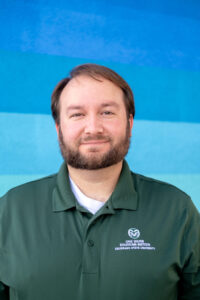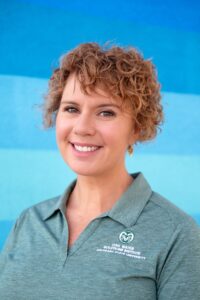The Clean Water Act of 1972 has unquestionably led to improvement in the quality of life for Americans. Yet, the designated planning agencies responsible for ensuring compliance with clean water regulations often struggle to compile and analyze the necessary data spread across disparate state and federal sources.
Earlier this year, CSU’s One Water Solutions Institute intervened by introducing agencies to the efficiencies of the Catena Analytics and eRAMS platform.
Efficiency via technology

The institute collaborated with the Colorado Department of Public Health and Environment’s Water Quality Control Division to gather feedback from the state’s designated planning agencies and to provide training on the institute’s software platforms. The Catena Analytics and eRAMS platform eliminates the need for agencies to individually pull public data from various state and federal sources, such as the Census Bureau, U.S. Geological Survey, and the Environmental Protection Agency. What once was a tedious scavenger hunt for data can now be completed in under five minutes using the platform.
The institute’s software also ensures consistency across agencies using the platform with directly comparable, uniform data. This ultimately makes it easier for each of Colorado’s designated planning agencies to complete their required areawide watershed management plans.
“Before using our platform, agencies used different data sources for information such as population, which can vary greatly depending on the source and defined parameters. Unifying the data source makes these reports comparable, apples to apples, at the statewide level” said Tyler Wible, Associate Director of Software at the One Water Solutions Institute.
Collaborating for the greater good
Colorado Department of Public Health and Environment was already using the institute’s platform to streamline processes for state assessors and has funded public access to the platform throughout the state. The Water Quality Control Division recognized the specific challenges to designated planning agencies in their reporting process and reached out to the institute to collaborate on a solution.

“This project is a great example of how we are making real-world impacts. We used stakeholder feedback to tailor the broad capabilities of the platform into an easy-to-use suite of tools and customized instructions to address their specific needs,” said Sarah Millonig, Associate Director of Operations at the One Water Solutions Institute.
Millonig and Wible organized a series of sessions with stakeholders from the state, designated planning agencies, and consulting firms in the field. They initially gathered feedback on the needs and challenges of the group, then used that feedback to develop the resources and functionality within the platform to meet those needs. They also provided demonstrations and training sessions on the software platform.
“Academic research often leads to publication, which is not always directly useful to regulatory bodies,” said Wible.
About the One Water Solutions Institute
The One Water Solutions Institute strives to bridge the gap between the development of innovative resources in academia and the effective implementation of those tools in the real world. “The last ‘5 percent’ can often be the most challenging. The heavy lifting of developing the research or product is done, but now we need to ensure that the right people have access to these resources and can benefit from our tools and expertise,” said Millonig.